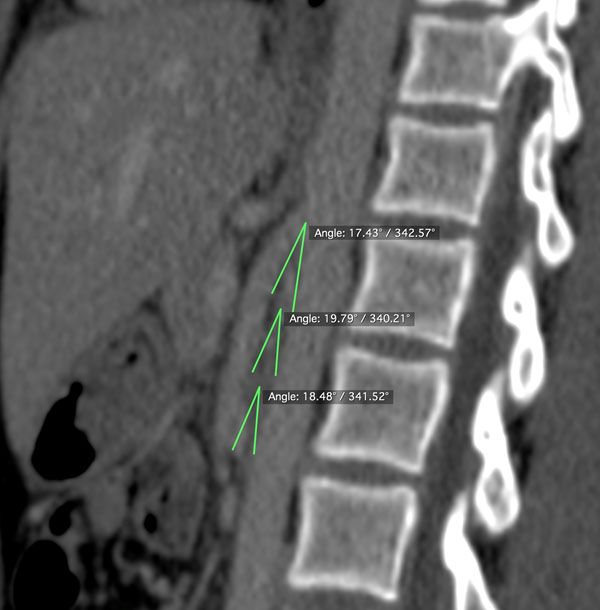Aortomesenteric Angle Change May Predict Left Renal Vein Transposition Failure in Nutcracker Syndrome
Tony Lu, MD1, Ugoeze J. Nwokedi, MD1, Alan B. Lumsden, MD1, Carlos F. Bechara, MD2.
1Houston Methodist Hospital, Houston, TX, USA, 2Loyola Medical Center, Maywood, IL, USA.
OBJECTIVES: Nutcracker syndrome (NCS) refers to symptomatic compression of the left renal vein (LRV) by the superior mesenteric artery (SMA) against the abdominal aorta. The diagnosis is more probable when the aortomesenteric angle (AMA) is less than 45° and associated with left-sided flank pain and/or hematuria. Transposition of the LRV, the most frequent surgical intervention, is typically successful 4-5 cm below its caval origin. However, in about 9% of cases, the procedure fails. This study examines our experience with LRV transposition and the AMA along the SMA.
METHODS:
This is a series of eight patients (7 female) referred to our institution with NCS between 2014 and 2017. Five of the 8 underwent LRV transposition. CT images were analyzed in OsiriX (OsiriX Foundation, Switzerland). The AMA was measured at 0, 4, and 5 cm below the origin of the SMA. Independent t-test and ANOVA were used to analyze the measurements in SPSS 20 (IBM, United States).
RESULTS:The mean AMA was 22.8 ± 0.6°. Four of the 5 patients (80%) had complete resolution of their symptoms after LRV transposition; mean follow-up was 18 months. One patient had recurrence of symptoms within 30 days that resolved after gonadal vein (GV) transposition. A second patient had recurrence of symptoms after 3 months that resolved with angioplasty but occluded at subsequent follow-up despite therapeutic anticoagulation. These two patients had very acute AMAs of 14.4° and 17.4°, respectively, which were relatively constant along the length of the SMA (Figure 1). Notably, radiographic evidence of May-Thurner syndrome was found in 7 of the 8 patients (87.5%) including our GV transposition but all were asymptomatic.
CONCLUSIONS:
The AMA along the length of the SMA should be considered before LRV transposition. In our practice, if the AMA remains constant, we would prefer alternative therapies like GV transposition or autotransplantation. These patients may also have a higher incidence of May-Thurner Syndrome and additional study to validate these findings would be beneficial.

Figure 1. Example of relatively constant aortomesenteric angle along length of superior mesenteric artery in patient who failed renal vein transposition.
Back to 2018 Program




